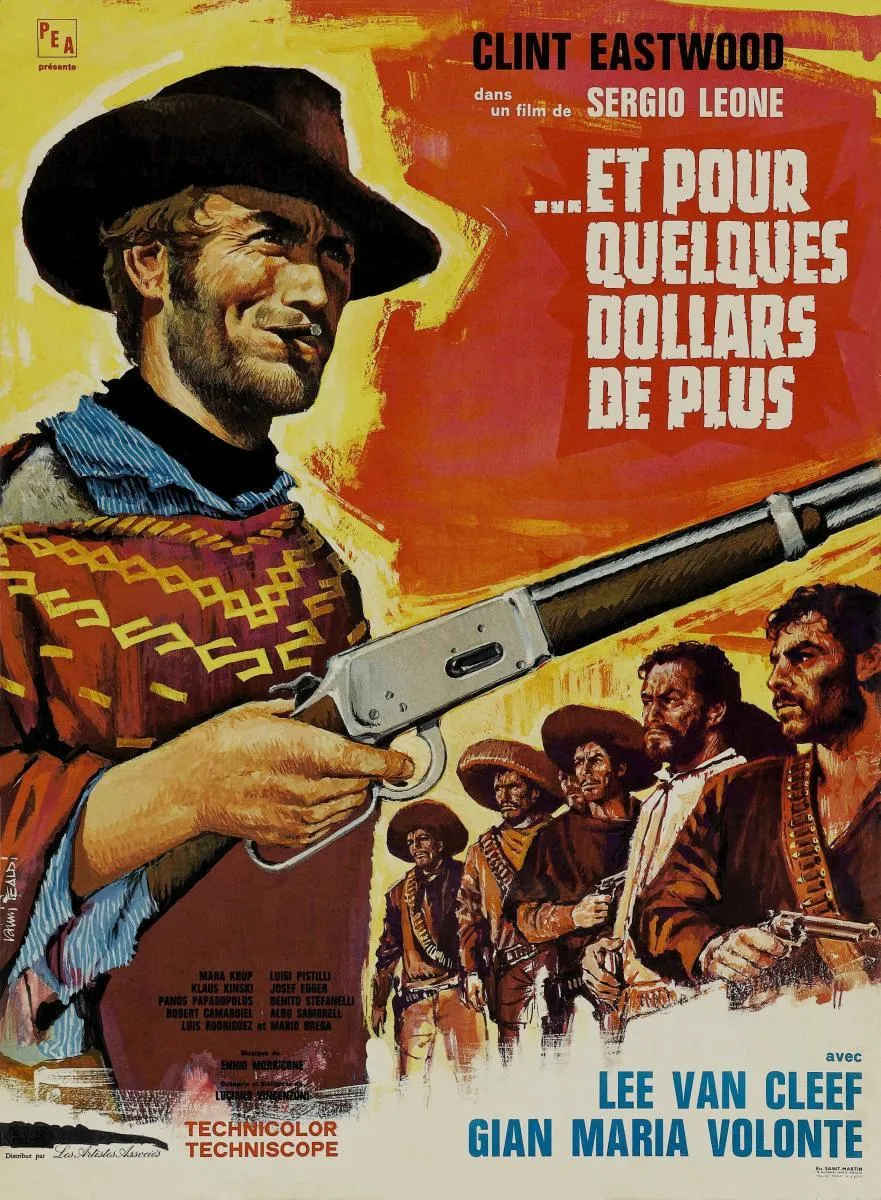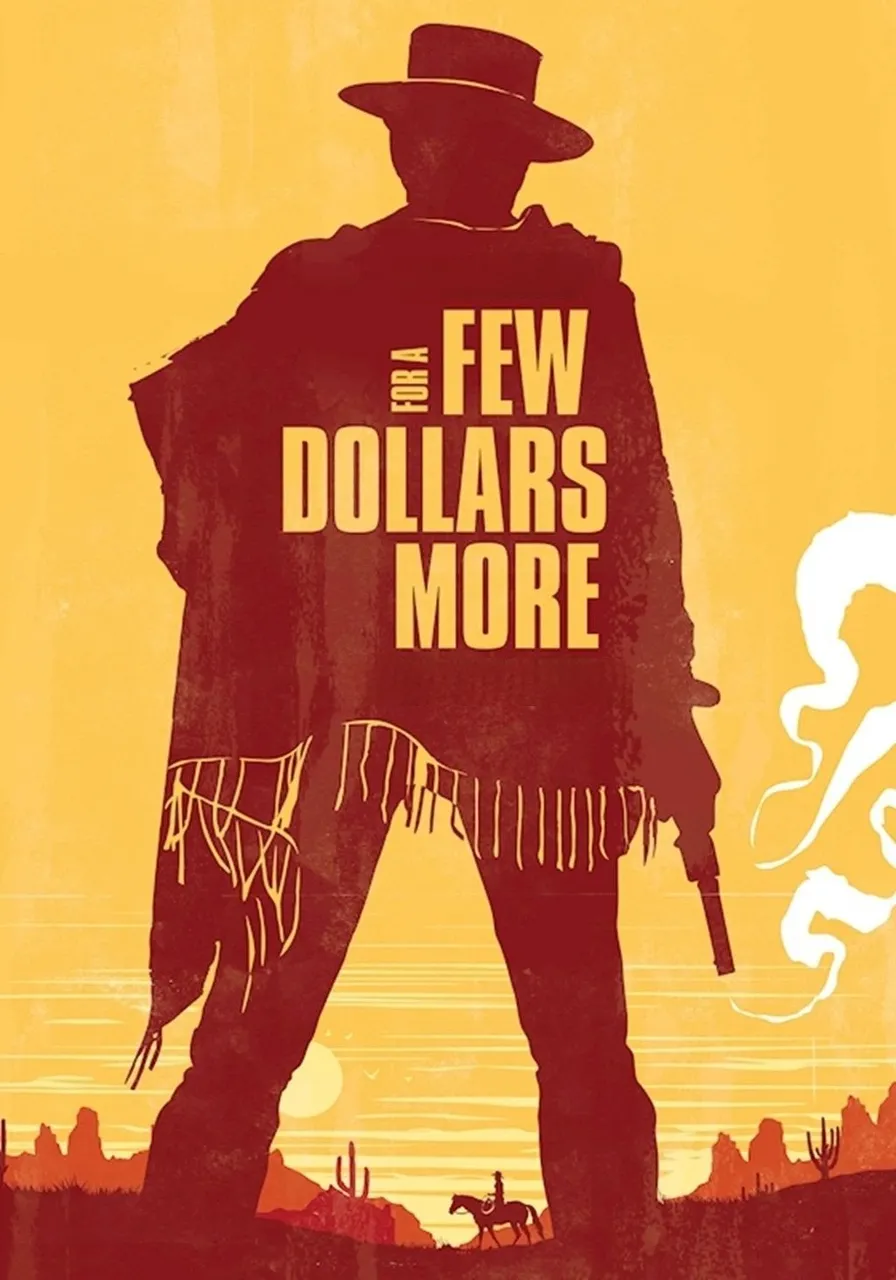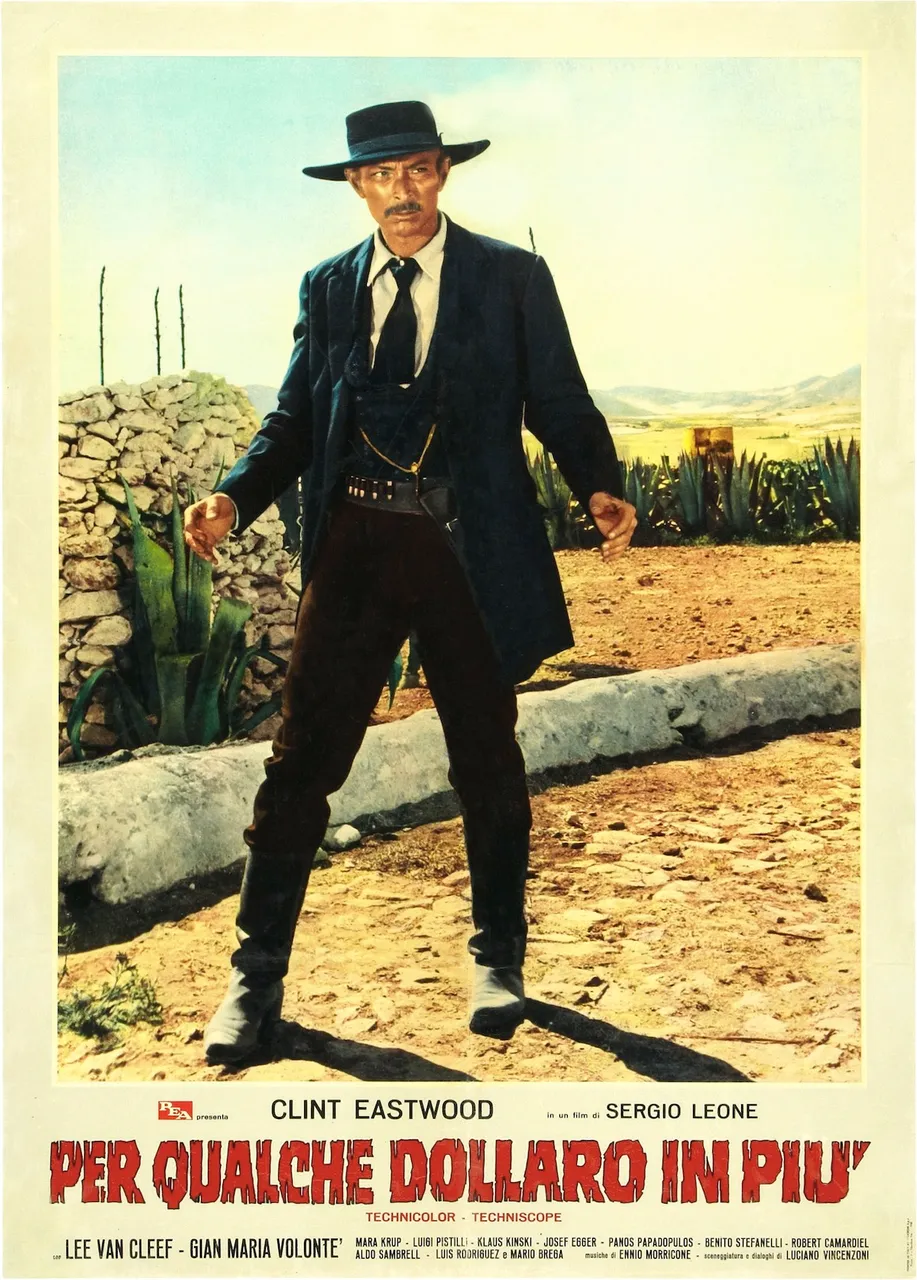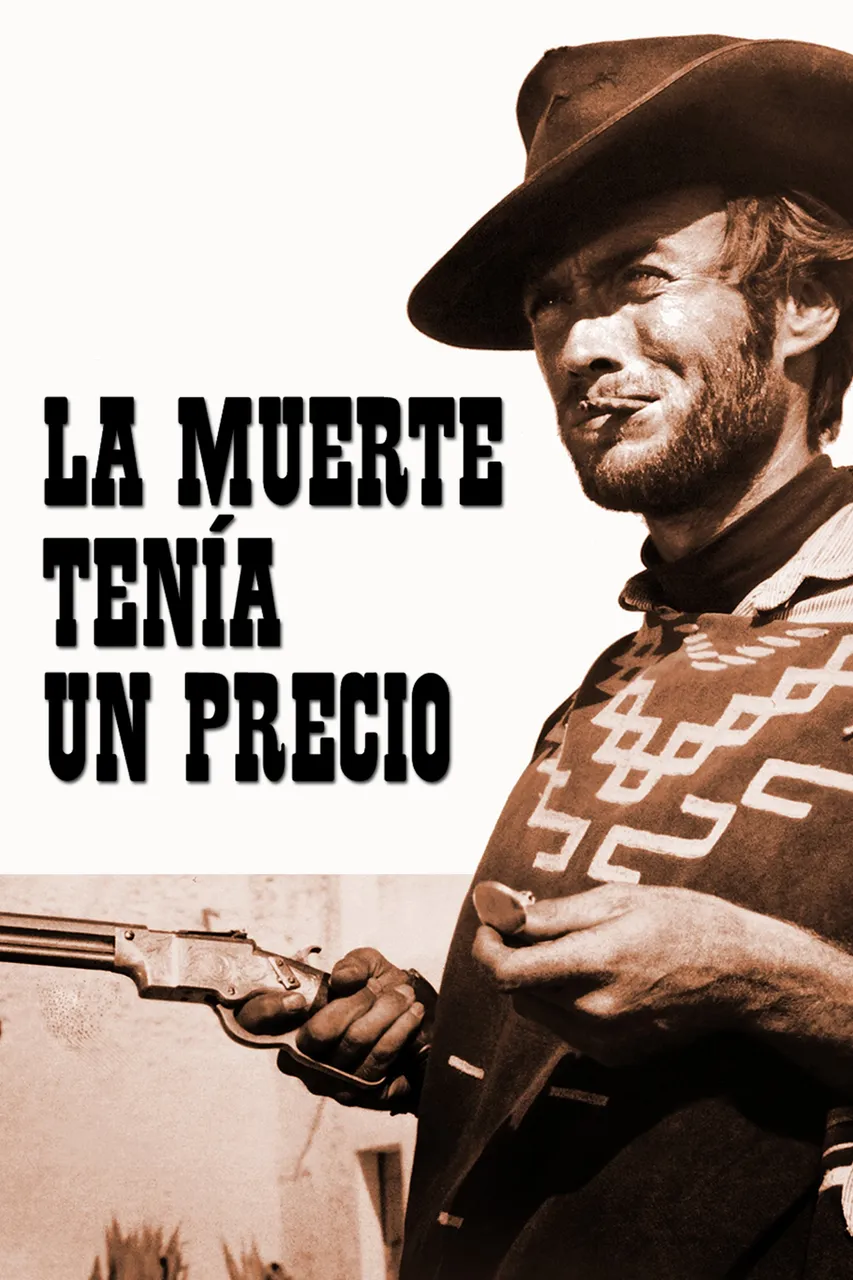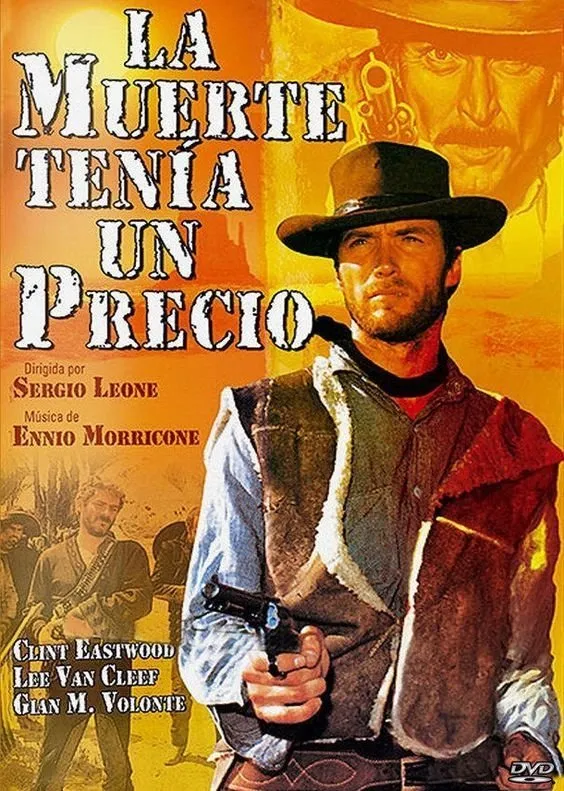
Protagonizada por Clint Eastwood & Lee Van Cleef
When talking about film trilogies - of which there are many - we rarely find examples in which the second part is better than the first. Normally sequels don't usually have the impact or the charm of the original installment, as happened with Matrix or so many others, but there are a handful of films that, being sequels, have managed to surpass the first installment in quality and reception, becoming not only exceptions to the rule but also true gems of cinema.
Cuando se habla de trilogías cinematográficas - que hay muchas - pocas veces encontramos ejemplos en los que la segunda parte sea mejor que la primera. Normalmente las secuelas no suelen tener el impacto o el encanto de la entrega original, tal como pasó con Matrix o tantas otras, pero existen un puñado de películas que, siendo secuelas, han logrado superar en calidad y en recepción la primera entrega, convirtiéndose no sólo en excepciones a la regla sino además en verdaderas joyas del cine.
To name a few of these cases, we have Coppola's The Godfather II, one of the best films ever; Batman: the Dark Knight, the best of Nolan's trilogy; Terminator II, which I thought was better than the first one; Toy Story 2, Shrek and finally, Lord of the Ring: the Two Towers; but before all these gems, a historic collaboration in the world of cinema had brought us an impressive Spaghetti Western sequel: Sergio Leone, Ennio Morricone, Clint Eastwood and Lee Van Cleef worked together to make For a Few Dollars More, sequel to the previous A Fistful of Dollars. In this second installment, set during the Civil War, Eastwood plays Manco, a bounty hunter on the trail of El Indio, a violent criminal for whose capture the justice system is offering a juicy amount of money. El Indio has been involved in murders, robberies, and even plots so twisted that they have managed to affect the U.S. military and its diplomatic relations with its Mexican neighbors. As dangerous as he's and as large as his gang is - or perhaps precisely because of it - El Indio is not only wanted by Manco, but also by Colonel Douglas Mortimer (played by Lee Van Cleef), retired from the army and who has an additional motivation: it's not only the reward money that attracts Mortimer. With this Manco-Indio-Mortimer triangle, director Sergio Leone made one of the most memorable stories of the western, an all-time classic of westerns.
Por nombrar algunos de estos casos, tenemos The Godfather II de Coppola, una de las mejores películas de la historia; Batman: the Dark Knight, la mejor de la trilogía de Nolan; Terminator II, que me pareció mejor que la primera; Toy Story 2, Shrek y por último, Lord of the Ring: the Two Towers; pero antes de todas estas joyas, una colaboración histórica en el mundo del cine nos había traído una secuela impresionante del Spaghetti Western: Sergio Leone, Ennio Morricone, Clint Eastwood y Lee Van Cleef trabajaron juntos en realizar For a Few Dollars More, secuela de la previa A Fistful of Dollars. En esta segunda entrega, ambientada durante la guerra de secesión, Eastwood encarna a Manco, un cazador de recompensas que anda tras la pista de El indio, un violento criminal por cuya captura la justicia ofrece una jugosa cantidad de dinero. El indio se ha visto envuelto en asesinatos, robos, e incluso complots tan retorcidos que han logrado afectar al ejército estadounidense y sus relaciones diplomáticas con sus vecinos mexicanos. A pesar de lo peligroso que es y de lo numerosa que es su banda - o quizás precisamente por eso - El Indio no sólo es buscado por Manco, sino también por el Coronel Douglas Mortimer (interpretado por Lee Van Cleef), retirado del ejército y quien tiene una motivación adicional: no es sólo el dinero de la recompensa lo que atrae a Mortimer. Con este triángulo Manco-Indio-Mortimer, el director Sergio Leone realizó una de las historias más memorables del western, un clásico de las películas de vaqueros de todos los tiempos.

In one line, this is a story of revenge. Eve Macarro (Ana de Armas) is an assassin trained by the Ruska Roma, an organization that somehow protects certain people through the assignment of caretakers, among them Eve. This organization is the same one that trained John Wick (hence the main connection between the characters) and has certain rules and protocols to comply with, especially with regard to other similar organizations with whom it shares the market.
As in the first installment of this trilogy, there's plenty of action here. Towns in the American West, or near the Mexican border, criminal gangs, robberies, hidden treasures, loot, rewards paid by the sheriff to those who deliver the criminals - dead or alive -, ambushes, chases, horseback rides, shootouts and gunmen with an enviable aim that borders on the impossible... all that is present in both the first film and in this sequel. Not bad, right?
However, one of the advantages that For a Few Dollars More has over A Fistful of Dollars, is the appearance of Colonel Mortimer. In the first installment all the focus was on the outlaw who came to town, a lone gunfighter taking on not one but two families who had control of the town. But here, in this other story, the attention is divided between the two characters, Mortimer and Manco, who are as opposite as they are complementary. Manco is not a very talkative guy, but he's arrogant, and his temper is somewhat violent, although he doesn't show it so often. For his part, the Colonel has the serenity of his age, of a lifetime of experience in military service. Manco seems to be motivated solely by money, his speed with the trigger is his job; Mortimer has other more honorable motives for catching the Indio. Unlike his character in the first installment, in this second Eastwood plays a gunman more interested in money than anything else. Manco uses a revolver, the Colonel a sort of sawed-off shotgun. These differences, plus the fact that they pursue the same objective, make them seem like rivals during the first part of the film, but since “the enemy of my enemy is my friend”, at some point they combine forces and embody, now separately, almost the same thing that Clint Eastwood's character represented in A Fistful of Dollars. Leone should also be applauded that, in this film, he inserted some mysterious details that he revealed at the right time to explain some things.
Sin embargo, una de las ventajas que tiene For a Few Dollars More sobre A Fistful of Dollars, es la aparición del Coronel Mortimer. En la primera entrega todo el foco estaba en el forajido que llegaba a la ciudad, un pistolero solitario que se enfrentaba no sólo a una sino a dos familias que tenían el control del pueblo. Pero acá, en esta otra historia, la atención se divide entre ambos personajes, Mortimer y Manco, que además son tan opuestos como complementarios. Manco no es un tipo muy hablador, pero sí arrogante, y su temperamento es un tanto violento, aunque no lo demuestre tan seguido. Por su parte, el Coronel tiene la serenidad de su edad, de una vida de experiencia en el servicio militar. Manco parece estar motivado únicamente por el dinero, su velocidad con el gatillo es su trabajo; Mortimer tiene otros motivos más honorables para atrapar al Indio. A diferencia de su personaje en la primera entrega, en esta segunda Eastwood encarna a un pistolero más interesado en el dinero que en otra cosa. Manco usa un revólver, el Coronel una especie de escopeta recortada. Estas diferencias, además de el hecho de que persiguen el mismo objetivo, los hace parecer como rivales durante la primera parte de la cinta, pero como "el enemigo de mi enemigo es mi amigo", en algún punto combinan esfuerzos y encarnan, ahora por separado, casi lo mismo que representaba el personaje de Clint Eastwood en A Fistful of Dollars. También hay que aplaudirle a Leone que, en esta película, insertó algunos detalles misteriosos que reveló en su momento justo para explicar algunas cosas.

As a disclaimer, although the three films in this trilogy feature Eastwood in the title role, it's not a trilogy about the same character. If one watches the three films, one can notice that, beyond the similarities in the gunslinger's outfit and some attitudes, there are differences - some very subtle, some not so subtle - that clearly differentiate one from the other. They are different characters. Similar, yes, typical of the western universe, but different characters at the end of the day.
Como aclaratoria, aunque las tres películas de esta trilogía tienen a Eastwood en el papel principal, no se trata de una trilogía sobre el mismo personaje. Si se ven las tres películas, uno puede notar que, más allá de las semejanzas en el outfit del pistolero y algunas actitudes, hay diferencias - algunas muy sutiles, otras no tanto - que claramente diferencian a uno de otro. Son personajes diferentes. Parecidos, sí, propios del universo western, pero personajes distintos al fin y al cabo.
It's for this reason that I consider this to be a thematic trilogy. Some call it The Dollar Trilogy, which I consider quite correct, because the central motif of the three stories is money; but they also call it the trilogy of The Man With No Name and there I don't agree, because not only Clint Eastwood has a name in the three films, but the name is not the same. In addition to the superb performance of its protagonist, it is always a quality addition to have Ennio Morricone, iconic composer of the history of cinema and in this sequel it was a great success to have added Lee Van Cleef who embodies a very strong character and who will appear again in The Good, the Bad and the Ugly with a quite different character, to close one of the best trilogies in the history of cinema and one of the few that achieves the impossible, that each new installment is superior to the previous one. I know that in today's times it's very difficult for anyone to be interested in cowboy stories, but if they leave aside the prejudices that it's old cinema they can find great movies. You don't need to see many westerns, just the most representative ones and I think Sergio Leone and Clint Eastwood's trilogy is a good way to approach the genre or to know what it's about and be able to enjoy them, how many of you like westerns, have you seen this one? I'll read you in the comments.
Por esta razón es que considero que esta es una trilogía temática. Algunos la llaman The Dollar Trilogy, lo que considero bastante correcto, porque el motivo central de las tres historias es el dinero; pero también la llaman la trilogía de The Man With No Name y allí no coincido, porque no sólo Clint Eastwood tiene nombre en las tres películas, sino que el nombre no es el mismo. Además de la soberbia actuación de su protagonista, siempre en un agregado de calidad el contar con Ennio Morricone, icónico compositor de la historia del cine y en esta secuela fue un gran acierto haber sumado a Lee Van Cleef quien encarna un personajes de mucha fuerza y quien volverá a aparecer en The Good, the Bad and the Ugly con un personaje bastante diferente, para cerrar una de las mejores trilogías de la historia del cine y una de las pocas que consigue lo imposible, que cada nueva entrega sea superior a la anterior. Sé que en los tiempos de hoy es muy difícil que alguien se interese por las historias de vaqueros, pero si dejan de lado los prejuicios de que es cine viejo se pueden encontrar con grandes películas. No es necesario que vean muchos westerns, solo los más representativos y creo que la trilogía de Sergio Leone y Clint Eastwood es una buena forma de acercarse al género o de saber de qué trata y poder disfrutarlos, ¿a cuántos de ustedes les gustan las películas de vaqueros? ¿han visto esta? Los leo en los comentarios.
Reviewed by | Reseñado por @cristiancaicedo
Other posts that may interest you | Otros posts que pueden interesarte:
 |
|---|
